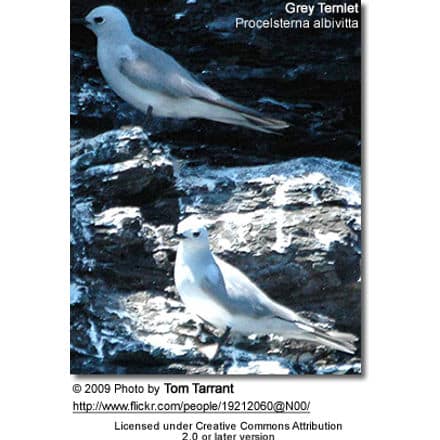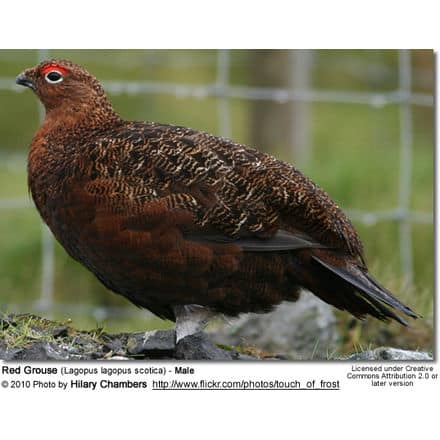Blue Noddy or Blue-grey Noddy
Noddies … Terns
The Blue Noddy (Procelsterna cerulea) – also known as Blue-grey Noddy – is a tern that is widely distributed in the Pacific Ocean.
It was formerly grouped with the Grey Noddy (Procelsterna albivitta) — however, most authorities now consider them separate species based on significant differences in size, coloration and geographical range.
Alternate (Global) Names
Chinese: ???? … Czech: nody šedý … German: Blaunoddi … Danish: Grå Noddy … Dutch: Grijze Noddy … Finnish: tuhkatiira … French: Noddi bleu … Italian: Sterna stolida blu-grigia … Japanese: Haiiroajisashi / ???????? … Norwegian: Blånoddy … Polish: rybitwa polinezyjska … Slovak: nody modrý … Spanish: Tiñosa Azulada … Swedish: Blå noddy
Distribution / Range
The Blue Noddies are primarily found on tropical oceanic islands, such as the American Samoa, the Cook Islands, Fiji, French Polynesia, Kiribati, Marshall Islands, New Caledonia, New Zealand, Samoa, Tonga (Niua), Lord Howe Island (off Australia), Tuvalu, Chile, Norfolk Islands, Pitcairn and the Hawaiian Islands. They are rare vagrants in Australia, Japan and Tuvalu (located between Hawaii and Australia).
They inhabit open, shallow seas in tropical and subtropical regions; typically roosting and breeding on inaccessible cliffs; and, to a lesser extent, on sheltered rocky ground, beaches, or under bushy vegetation.
Subspecies and Distribution:
-
-
- Procelsterna cerulea cerulea (F. D. Bennett, 1840) – Nominate Race
- Range: Kiritimati or Christmas Island and Marquesas Island
- Procelsterna cerulea cerulea (F. D. Bennett, 1840) – Nominate Race
-
- Procelsterna cerulea saxatilis (W. K. Fisher, 1903)
- Range: Marcus Island and northern Marshall Island east to northwestern Hawaiian Islands
- Procelsterna cerulea saxatilis (W. K. Fisher, 1903)
-
- Procelsterna cerulea nebouxi (Mathews, 1912)
- Range: Tuvalu (Ellice Island), east to Phoenix Island; south to Fiji, and Western Samoa.
- Procelsterna cerulea nebouxi (Mathews, 1912)
-
- Procelsterna cerulea teretirostris (Lafresnaye, 1841)
- Range: Tuamotu Island; probably also occurs on Cook, Austral and Society Islands
- Procelsterna cerulea teretirostris (Lafresnaye, 1841)
- Procelsterna cerulea murphyi (Mougin and de Naurois, 1981)
- Range: Gambier Islands
-
Description
The Blue Noddy measures 9.8–11 inches (25– 28 cm) in length and has a wingspan of 18–23.6 inches (46–60 cm). The average weight is 2.4 oz or 69 grams.
The Blue Noddy has a mostly pale plumage, with an all-grey head and upper plumage. The plumage below is paler than the upper plumage. The upper wings are a little darker in color. The short tail is shallowly forked.
The eyes are black and appear large due to the black patches in front of them. They have white patches behind the eyes. There is a white patch behind the eye. The black bill is thin and pointed. The legs and feet are black except of the pale yellow webs.
Males and females look alike.
Immature birds have a browner plumage and darker, more contrasting flight feathers.
Calls / Vocalizations
The Blue Noddy is usually quiet. Its call is a soft, purring sound.
Diet / Feeding
The Blue Noddies mostly feed on plankton, but will also take small fish, squid, sea-skaters and small crustaceans.
They generally forage in small groups close to the shore, over lagoons and inshore areas, often around upwelling currents. They feed by hovering above the surface of the water and diving to pick food from the surface.
Breeding / Nesting
The Blue Noddies’ breeding season varies by location. In Australia, breeding activities typically commence in September; in Kiritimati most breeding activities occur between August to November; in the Phoenix Islands between June and August; and in Hawaii, they breed year round, however, the egg-laying peak is from February to March.
They breed in colonies on rocky islands. The roughly constructed nest is made from grass and seaweed and typically placed on a sheltered rocky surface, in a crevice or hollow, or below a boulder or vegetation.
The female usually only lays one whitish egg with dark markings. The parents share the task of incubating the eggs for about 32 days, at which time the chick hatches. The nestling is brooded continuously by the adults for about 2 to 3 weeks. The parents feed the chick regurgitated food.
The chick fledges (takes its first flight) when it is 37 days old; but the parents will continue to feed it for some time after that.
Species Research by Sibylle Johnson
Please Note: The articles or images on this page are the sole property of the authors or photographers. Please contact them directly with respect to any copyright or licensing questions. Thank you.





